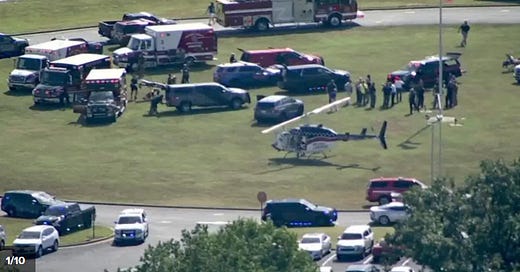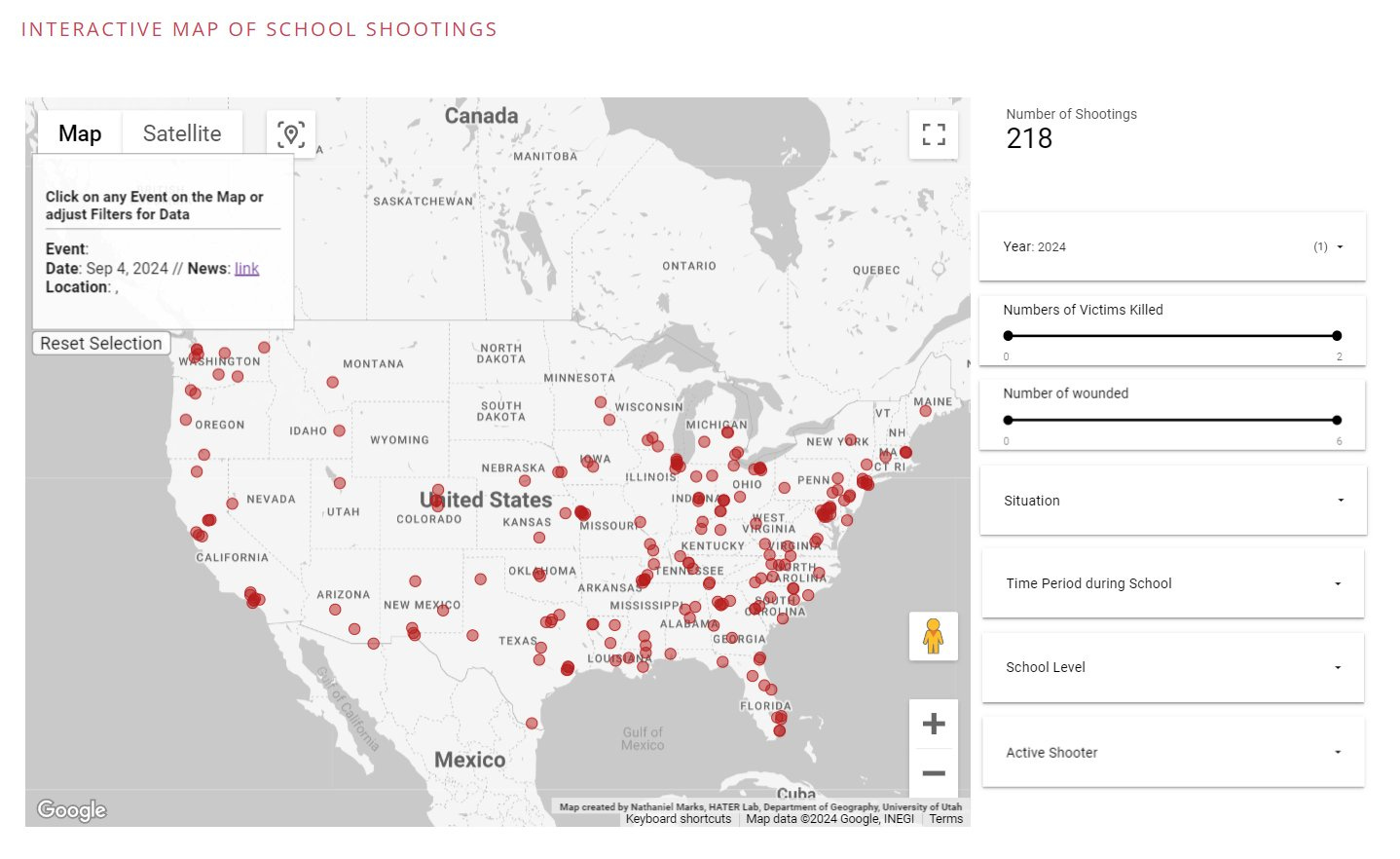Apalachee High follows the same patterns as hundreds of other school shootings
All three planned attacks in 2024 have been committed by current students at the school and have taken place in rural communities 40+ miles outside of metro areas in GA, IA, and WI.
During the 4:30pm press conference on the Apalachee High School shooting today in Winder, GA, police provided these updates:
Shooter was a 14-year-old male and a current student at Apalachee High
Shooter was attending math class in the morning with other students, he walked out of the classroom, and attempted to re-enter the classroom with a gun
Two SROs were working at the school when the shooting started
Shooter surrendered to the SROs when they confronted him inside of the school
2 students and 2 teachers were killed
9 victims are hospitalized for gunshot wounds (they have not been identified)
Unclear how many victims were injured and didn’t require hospitalization
Police believe the victims were shot randomly without specific targets
The 14-year-old shooter will be charged with murder as an adult
Most school shooters are current or former students with a direct connection to the campus, knowledge of the layout and security procedures, and training in the lockdown plan. Despite barricades and standoffs being a staple of police response training for ‘active shooter’ incidents, most school shooters commit suicide, flee, or surrender.
After every school shooting, people say “we never thought something like this could happen in our community”. Winder, Georgia is a town of 19,000 people about 45 miles from Atlanta. Planned attacks at schools happen most frequently in small, rural communities like school shootings at Perry Middle/High School (IA) and Mount Horeb Middle School (WI) earlier in 2024.
Apalachee High School (GA) is on a 4 million sq. ft. combined campus that includes a middle and elementary school. This huge open campus couldn’t be turned into a fortress or have a “single point of entry” like TSA at an airport. This campus would require 8,400 feet of fencing and dozens of guards just to patrol the fenceline. Even if the two SROs working on the campus were Olympic sprinters, it would still take them minutes to get across the entire campus.
Insider Attacks
School shootings are not random. These attacks are usually committed by current or former students who experienced trauma and develop a deep grievance that they blame on the school. They devolve to a point of crisis where they believe that violence is their only option, and they plan to die during the school shooting. Classmates of the 14-year-old shooter said that he was quiet, only gave one word answers in class, and was frequently absent from school.
Being a current student (insider), the 14-year-old shooter was somehow able to sneak the guns inside Apalachee High School and bypass the School Resource Officers. Students told local news that the school does not have any type of entry screenings or bag searches so the student would know he could sneak a gun inside a backpack or duffle bag (just like Perry High in January).
Another unresolved problem is the term “active shooter” describes six different situations that each require different planning, prevention, and response procedures. The shooting at Apalachee High School was a surprise “insider attack” and the circumstances would be totally different if it was a heavily armed and armored former student shooting his way into a locked building (frontal assault like Uvalde).
So far in 2024
This planned attack was the 218th shooting at a k-12 school so far in 2024.
2024 is on pace to exceed the record number of shootings in 2023.
More victims have been shot on campus in 2024 than in 2018 when there were planned attacks at high schools in Marshall County, KY, Parkland, FL, and Santa Fe, TX.
Preventing the Next Attack
There are three steps we can take to stop many school shootings:
1. Public education and standardized reporting system similar to “see something, say something” so that anyone who spots “red flags” can easily report them to police (read more: What can the average person do to prevent the next school shooting?)
2. Fully funded crisis intervention programs in every community to help someone who shows risk factors before they decide violence is their only option (see: The Off Ramp Project).
3. A 14-year-old can’t buy guns in any state which means the gun used at Apalachee High School was taken from a legal owner who didn’t properly secure their firearm. Every state needs to pass laws that require guns to be stored inside a locked safe and hold the legal owners criminally and civilly liable for crimes that are committed with their unsecured firearm.
David Riedman is the creator of the K-12 School Shooting Database, Chief Data Officer at a global risk management firm, and a tenure-track professor. Listen to my recent interviews on Freakonomics Radio, New England Journal of Medicine, and my article on CNN about AI and school security.










